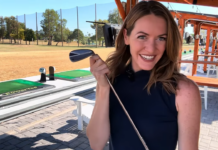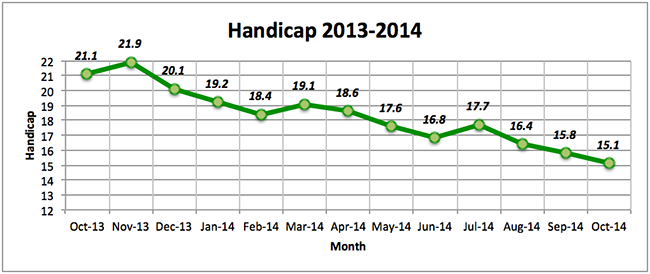A Focus on Game Improvement is a Year Round Process
As the golf season comes to an end in the northern regions of the country, our focus as instructors begins to shift. We transition from managing the game in order to maximize performance during the warmer months to analyzing the performance of our students; identifying areas to work on and improve during the colder months ahead.
This process typically begins with a look back at the goals that were set before the beginning of the season. For most students and professionals alike, these goals center around the score, whether it is trying to reach a career-low benchmark or simply improving the handicap index to a predetermined number. For some, the goal may be something less quantifiable like improving consistency, dispersion, centered face contact, etc. Regardless of what the initial goals were, assessing our results in relation to them is necessary before reestablishing new ones for the year ahead. After this type of assessment, we’re hoping that all the goals that were set have been reached and we can move to a new level of mastery going forward. In instances where our goals weren’t reached, however, it’s important to reassess the process to determine where adjustments need to be made.
The first step in performing this type of “self assessment” is to identify the inputs that are contributing to the attempt to reach the goal. For example, if during your last goal planning session you determined that you’d like to improve from an index of 20 to 12, which is certainly an aggressive improvement goal for most, but you were only able to get down to a 16, you must look at variables like lesson frequency, practice frequency, practice effectiveness/mindfulness, diversity of practice, etc in order to find the area that’s contributing to the lack of timely progression. In my experience, the two most common areas we tend to overlook while attempting to improve are 1. Practice Effectiveness/Mindfulness and, 2. Practice Frequency.
Practice is a skill that most players tend to learn at a “101” level and never seek to get their PhD in after that. Actively learning techniques that allow for faster, longer-term progression is crucial if you’re going to maximize the time and resources spent working on the game. Determining what that process looks like for you is something that should be done on the onset of any improvement program you enter into, golf-related or not, and is specific to the needs of the individual.
Finally, even if your goals tend to be of the less-quantifiable type, identifying ways to track and assess those goals is critical. For example, one of the most common goals most players have when starting out on a plan of improvement is simply gaining consistency. That sounds perfectly fine but what exactly does that look like and how can we measure it? In order to measure something as ambiguous as consistency, we must first determine the individual’s definition of consistency. We then look to traditional on-course statistics such as fairways-in-regulation, greens-in-regulation and putts per green in regulation. We also go more in-depth with stats like the side of the fairway/green most frequently missed. If your greens in regulation per 18-hole round last season was five and it stays at five this next season, but you went from missing the green on both sides to missing it left 90 percent of the time instead; you may not improve the handicap index but by definition you’ve become dramatically more consistent with your miss. I recommend that my Clients keep a detailed “Stats Spreadsheet” to track this data in order to best identify how to continue to reach goals quickly. Here is an example of what this spreadsheet can look like:

Good luck as you strive to continue the progression of your game, both in execution and knowledge of, to new levels!
Now is the perfect time to review your season with a Certified Personal Coach and set new goals. Talk to a coach today!











